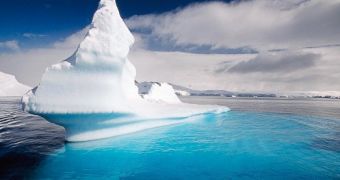Microbial species presently inhabiting Antarctica's Deep Lake have come up with a pretty ingenious way to make sure they not only survive, but also thrive in this very harsh environment. Long story short, these microorganisms swap fairly large chunks of DNA.
In a paper published in yesterday's issue of the journal Proceedings of the National Academy of Sciences, researchers detail that Antarctica's Deep Lake sits some 50 meters (165 feet) below sea level.
Despite the fact that it is sometimes exposed to temperatures as low as minus 20 degrees Celsius (minus 4 degrees Fahrenheit), it has never been documented to freeze. The remote lake behaves in this fairly peculiar manner due to the fact that is contains lots of salt.
Needless to say, not many organisms would choose Antarctica's Deep Lake to serve as their home. Still, by exchanging DNA, single-celled organisms known to scientists as haloarchaea manage to thrive in these waters, Live Science tells us.
“Our research shows these haloarchaea swap much more genetic material with each other than has been observed in the natural environment before. Long stretches of virtually identical DNA are exchanged between different genera [i.e. classification above species], not just species,” microbiologist Rick Cavicchioli with the University of New South Wales in Australia reportedly said in a statement.
Whenever these microorganisms come together and start sharing genetic material, it can happen that chunks of DNA as long as 35,000 letters of code get traded.
“Despite this rampant gene swapping, the different species are maintained and can co-exist because they have evolved to exploit different niches and consume different food sources,” the researcher further detailed.
Specialists suspect that, by behaving in this “promiscuous” manner and constantly exchanging DNA with one another, these microbes have an easier time keeping healthy and dealing with potential threats in their environment.
“This shuttled gene content could confer such benefits as resistance to viruses or bolster their ability to respond to specific environmental factors,” Rick Cavicchioli argued, as cited by EurekAlert.

 14 DAY TRIAL //
14 DAY TRIAL //